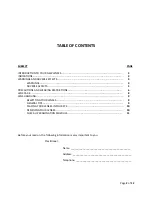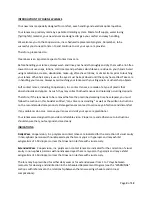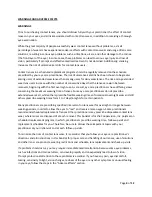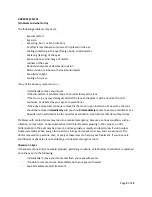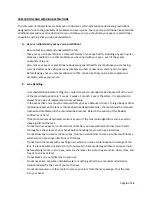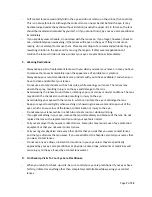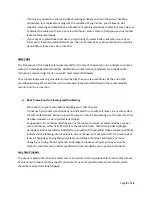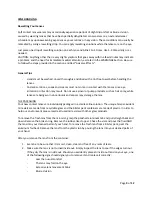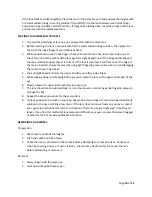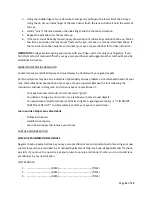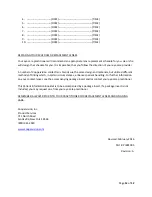
Page
4
of
12
WARNINGS
AND
ADVERSE
EFFECTS
WARNINGS
Prior
to
purchasing
contact
lenses,
you
should
discuss
fully
with
your
practitioner
the
effect
of
contact
lenses
on
your
eyes,
and
all
risks
associated
with
contact
lens
wear,
in
addition
to
receiving
a
thorough
eye
examination.
While
the
great
majority
of
people
successfully
wear
contact
lenses
without
problems,
a
small
percentage
of
wearers
have
experiences
adverse
effects
with
contact
lens
wear
and
usage
of
lens
care
solutions,
resulting
in
serious
eye
problems
such
as
infections,
ulcers,
and
other
damage
to
the
cornea
(the
front
layer
of
the
eye).
In
some
cases,
these
problems
can
lead
to
serious
eye
injury
and
loss
of
vision,
particularly
if
prompt
and
effective
medical
treatment
is
not
obtained.
Additionally,
smoking
increases
the
risk
of
ulcerative
keratitis
for
contact
lens
users.
Contact
lenses
in
a
scheduled
replacement
program
should
be
regularly
removed
on
the
schedule
prescribed
by
your
eye
care
practitioner.
The
risk
of
ulcerative
keratitis
has
been
shown
to
be
greater
among
users
of
extended
wear
lenses
than
among
users
for
daily
wear
lenses.
The
risk
among
extended
wear
lens
users
increase
with
the
number
of
consecutive
days
that
the
lenses
are
worn
between
removals,
beginning
with
the
first
overnight
use.
As
a
result,
eye
care
practitioners
have
differing
views
concerning
the
maximum
wearing
time
of
lenses.
Some
eye
care
practitioners
do
not
prescribe
extended
wear
at
all,
while
others
prescribe
flexible
wearing
times
of
occasional
overnight
wear
and
still
others
prescribe
wearing
times
form
1
to
7
days/6
nights
for
certain
patients.
Many
practitioners
are
prescribing
specified
intervals
of
no
lens
wear
for
overnight
or
longer
between
wearing
periods,
in
order
to
allow
the
eyes
to
“rest”
and
receive
more
oxygen.
Some
practitioners
recommend
scheduled
replacement
f
lenses.
Other
practitioners
may
prescribe
disposable
contact
lens
wear,
where
lenses
are
disposed
of
at
each
removal.
This
booklet
is
for
the
Coopervision,
Inc.
polymacon
scheduled
replacement
program,
in
which,
practitioners
prescribe
wearing
time,
follow
‐
up
visit
and
replacement
schedules
for
you.
Therefore,
be
sure
to
discuss
these
important
topics
with
your
practitioner
at
your
initial
visit
and
at
each
follow
‐
up
visits.
To
minimize
the
risks
of
contact
lens
wear,
it
is
essential
that
you
follow
your
eye
care
practitioner’s
directions
and
all
instructions
in
this
booklet
for
proper
care
and
handling
of
our
lenses,
use
of
solutions
and
other
lens
care
products,
wearing
restrictions
and
schedule,
lens
replacement
and
check
‐
up
visits.
If
a
problem
should
occur,
you
may
require
immediate
medical
attention
because
some
eye
problems,
such
as
infections
and
corneal
ulcers,
can
develop
rapidly
and
unexpectedly
lead
to
loss
of
vision.
Prompt
professional
attention
to
these
problems
is
essential.
If
you
have
any
pain,
eye
discomfort,
tearing,
sensitivity
to
light,
vision
changes,
redness
of
the
eye
or
any
other
symptom
or
unusual
feeling
in
your
eye,
follow
the
steps
in
the
“Adverse
Effects”
section.


